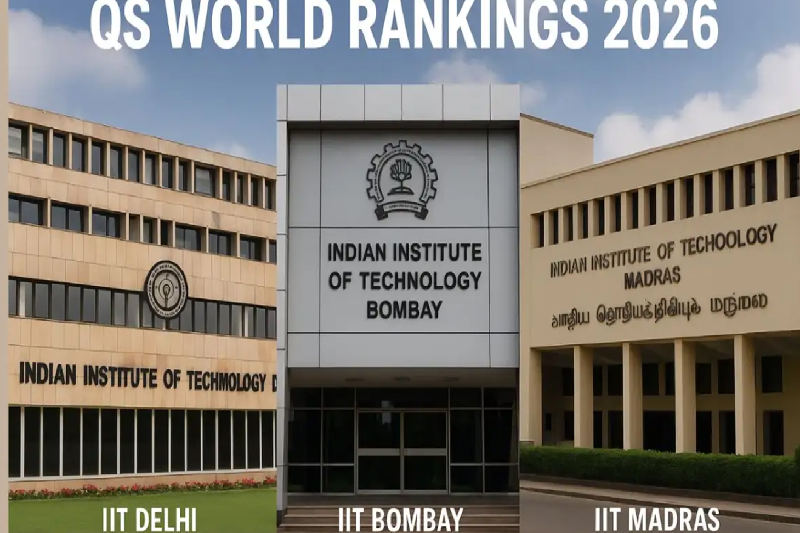
Canada Tightens Student Visa Rules: Indian Applicants Face 74% Rejection Rate
Canada, long celebrated as a top destination for international students, is tightening its student visa regulations, and the impact is being felt most acutely by Indian applicants. Once a country that welcomed tens of thousands of students from India each year, Canada is now witnessing a dramatic fall in applications, coupled with record-high rejection rates. This shift comes amid Ottawa’s broader strategy to curb temporary migration and combat fraud linked to study permits.
Record Rejection Rates for Indian Students
According to data shared with Reuters by Canada’s immigration department, nearly three-quarters (74%) of Indian study permit applications were rejected in August 2025. This marks a sharp increase from the 32% refusal rate recorded in August 2023. By comparison, the overall refusal rate for all international students hovered around 40%, while China’s rejection rate was approximately 24% during the same period.
This dramatic rise in rejections has not only deterred potential students but has also sent shockwaves through Indian communities considering Canada as a study destination.
Drop in Indian Student Applications
The number of Indian applicants has fallen significantly. Only 4,515 Indian students applied for study permits in August 2025, down from 20,900 in August 2023. In 2023, Indian students accounted for just over one-quarter of all international applicants, making India Canada’s largest source of international students for more than a decade. The sharp decline now underscores the growing perception that Canada is no longer an easy or reliable option for higher education.
Fraud Concerns Drive Stricter Scrutiny
One of the key factors behind the crackdown is the rise in fraudulent admissions documents. Canadian authorities uncovered nearly 1,550 study permit applications in 2023 that relied on fake acceptance letters, most originating from India. In response, Ottawa implemented strengthened verification systems, identifying over 14,000 potentially fraudulent letters across all international applicants last year.
As part of this tightened oversight, Canada has also raised the financial requirements for prospective students. Indian officials in Ottawa have acknowledged the increase in rejections but emphasized that decisions on study permits rest solely with Canadian authorities. They also noted that Indian students have historically contributed significantly to Canadian institutions through talent and academic performance.
Diplomatic Tensions Add Complexity
The surge in rejections coincides with a period of strained diplomatic relations between India and Canada. In 2023, former Canadian Prime Minister Justin Trudeau accused Indian agents of involvement in the killing of a Canadian citizen in British Columbia—a claim that India has strongly denied. While the current visa changes are framed as administrative measures to reduce fraud, this backdrop of political tension cannot be entirely separated from the context in which Indian students now face heightened scrutiny.
Universities Feeling the Impact
Canadian universities are already experiencing the fallout from these changes. The University of Waterloo, home to Canada’s largest engineering faculty, has seen a two-thirds drop in Indian enrolment across both undergraduate and graduate programs over the last three to four years. Similar declines have been reported by the University of Regina and the University of Saskatchewan.
Admissions consultants note that the application process has become far more rigorous. Financial documentation alone is no longer sufficient; students must now clearly trace the origin of their funds and undergo detailed background checks. Toronto-based immigration consultant Michael Pietrocarlo explained that applicants are facing far more scrutiny than in previous years.
Changing Perceptions Among Indian Students
For Indian students, Canada’s once-clear pathway from study to work and eventual permanent residency has become increasingly uncertain. Many are now reevaluating whether the risk of rejection is worth the potential benefits of a Canadian education.
Jaspreet Singh, founder of the International Sikh Students Association, shared his perspective with Reuters: students who were once enticed by government slogans such as “Study, work, stay” now feel the promise of long-term opportunity has dimmed. He added that some applicants who were rejected are relieved they did not embark on the Canadian study journey, given the uncertainties and high probability of refusal.
The Broader Implications for International Education
Canada’s tightening of student visa regulations signals a shift in the country’s approach to international education. While the changes aim to address fraud and manage migration, they are also reshaping Canada’s image as a welcoming study destination, particularly for Indian students. Institutions that have historically relied on a steady flow of Indian students are now navigating declining enrolments, impacting both classroom diversity and tuition revenue.
For students in India, Canada is no longer seen as a guaranteed pathway to quality education, work experience, and permanent residency. Other countries may become more attractive alternatives as Indian students reassess their options, weighing both the opportunities and risks associated with studying abroad.
Conclusion: A Pivotal Moment for Indian Students and Canada
Canada’s recent student visa reforms mark a pivotal moment for the nation’s international education landscape. With the rejection rate for Indian students soaring to 74% and applications dropping sharply, the once-prominent corridor between India and Canada is undergoing a profound transformation.
While the government aims to curb fraud and ensure only genuine students are admitted, the changes have also raised questions about Canada’s long-term appeal as a study destination. For Indian students, careful planning, thorough documentation, and realistic expectations have become more important than ever. The evolving scenario serves as a reminder that even the most popular international education destinations are not immune to regulatory and geopolitical shifts—and that students must remain vigilant and informed when making life-changing decisions about studying abroad.



